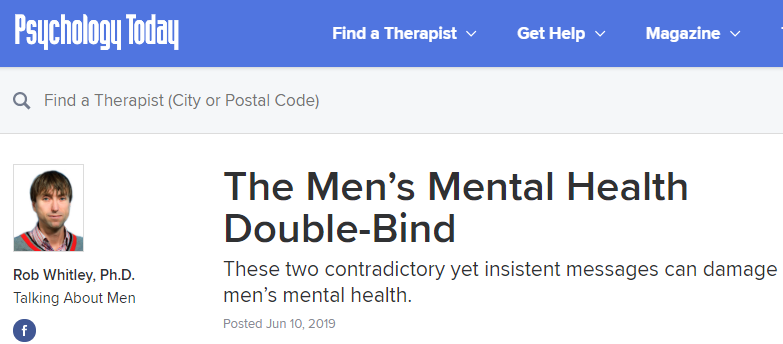In the modern vernacular, the sociopath is someone who lacks empathy, remorse and an understanding of right and wrong. The sociopath sees no difference between the truth and a lie, only their utility. Additionally, they never think about the consequences of their actions. A sociopath sees no harm in telling people that his brain juice will prevent concussions. The veracity of his statements are meaningless. What matters is how well it moves product. People ending up with brain damage as a result is never considered.
The key thing about the modern sociopath is the ambivalence toward the truth. They think saying something is the same as doing something. What matters is if the words get the listener to do what the sociopath wants them to do. Standing in front of crowd, making false claims, is fine if it causes people to buy product. If the truth sells more product, then the truth is better. From the perspective of the modern sociopath, the difference is about the results, not the accuracy of the statements. The truth or a lie, whichever works.
Now replace “sociopath” with “politician” and “product” with “votes” and you have the modern managerial democracy. It’s not that our politicians lie. It’s that for them, a lie is indistinguishable from the truth. That’s why they seem so utterly shameless. Shame requires a sense of right and wrong, a knowledge that what you said or did is intrinsically wrong. For the people who rule over us, right and wrong only exist in the context of their own ambitions. Something is “right” if it benefits the person in the moment.
“The Z Man”, “Rule by Sociopath”, The Z Blog, 2018-02-21.
May 25, 2020
QotD: Sociopaths and politicians
May 13, 2020
Rudolf Hess – Nazi Pacifist, Traitor or Madman? – WW2 Special Episode
World War Two
Published 12 May 2020In a series of events, Hitler’s second in command Rudolf Hess decides to fly to Britain to enter peace negotiations with the Allies. But the true reasons behind and effects of his action remain ambiguous at best.
Join us on Patreon: https://www.patreon.com/TimeGhostHistory
Or join The TimeGhost Army directly at: https://timeghost.tvFollow WW2 day by day on Instagram @World_war_two_realtime https://www.instagram.com/world_war_t…
Between 2 Wars: https://www.youtube.com/playlist?list…
Source list: http://bit.ly/WW2sourcesHosted by: Indy Neidell
Written by: Joram Appel
Director: Astrid Deinhard
Producers: Astrid Deinhard and Spartacus Olsson
Executive Producers: Astrid Deinhard, Indy Neidell, Spartacus Olsson, Bodo Rittenauer
Creative Producer: Joram Appel
Post-Production Director: Wieke Kapteijns
Research by: Joram Appel
Edited by: Mikołaj Cackowski
Sound design: Marek Kamiński
Map animations: Eastory (https://www.youtube.com/c/eastory)Colorizations by:
Norman Stewart, https://oldtimesincolor.blogspot.com/
Carlos Ortega Pereira, BlauColorizations, https://www.instagram.com/blaucoloriz…
Jaris Almazani (Artistic Man), https://instagram.com/artistic.man?ig…
Olga Shirnina, https://klimbim2014.wordpress.com
Adrien Fillon, https://www.instagram.com/adrien.colo…Bibliography:
– Balfour, Michael, Propaganda in War, 1939–45: Organizations, Policies, and Publics in Britain and Germany (London, 1979).
– Fox, Jo. “Propaganda and the Flight of Rudolf Hess, 1941-45”. In: The Journal of Modern History 83:1 (March 2011) 78-110.
– Gorodetsky, Gabriel, “The Hess Affair and Anglo-Soviet Relations on the Eve of ‘Barbarossa'”. In: The English Historical Review 101:399 (Apr 1986) 405-420.
– Görtemaker, Manfred, “The Bizarre Mission: Rudolf Hess in Britain,” in Britain and Germany in the 20th Century, ed. M. Görtemaker (Oxford, 2006), 75–101.
– Heiden, Konrad, “Hitler’s Better Half”. In: Foreign Affairs 20:1 (Oct 1941) 73-86.
– Kettenacker, Lothar, “Mishandling a Spectacular Event: The Rudolf Hess Affair,” in Flight from Reality: Rudolf Hess and His Mission to Scotland, ed. David Stafford (London, 2002) 19–38.
– Schmidt, Rainer, “The Marketing of Rudolf Hess: A Key to the ‘Preventative War Debate’?” War in History 5 (1998) 62-83.Sources:
Bundesarchiv
Portraits of Douglas Douglas-Hamilton, duke of Hamilton and Duff Cooper, MP, courtesy National Portrait Gallery
Narodowe Archiwum Cyfrowe
Zentralbibliothek Zürich
Portrait of Max Aitken, Lord Beaverbrook, courtesy Nationaal Archief
IWM D 8987Soundtracks from the Epidemic Sound:
Rannar Sillard – “March Of The Brave 4”
Reynard Seidel – “Deflection”
Andreas Jamsheree – “Guilty Shadows 4”
Johannes Bornlof – “The Inspector 4”
Johannes Bornlof – “Deviation In Time”Archive by Screenocean/Reuters https://www.screenocean.com.
A TimeGhost chronological documentary produced by OnLion Entertainment GmbH.
May 2, 2020
April 13, 2020
QotD: Foucault’s “Ship of Fools”
And so, Foucault tells us, in the fifteenth century there is a sudden emergence of a complex of artistic and philosophical themes linking madmen, the sea, and the terrible mysteries of the world. These culminate in the “Ship Of Fools”:
Renaissance men developed a delightful, yet horrible way of dealing with their mad denizens: they were put on a ship and entrusted to mariners because folly, water, and sea, as everyone then knew, had an affinity for each other. Thus, “Ships of Fools” crisscrossed the seas and canals of Europe with their comic and pathetic cargo of souls. Some of them found pleasure and even a cure in the changing surroundings, in the isolation of being cast off, while others withdrew further, became worse, or died alone and away from their families. The cities and villages which had thus rid themselves of their crazed and crazy, could now take pleasure in watching the exciting sideshow when a ship full of foreign lunatics would dock at their harbors.
This was such a great piece of historical trivia that I was shocked I’d never heard it before. Some quick research revealed the reason: it is completely, 100% false. Apparently Foucault looked at an allegorical painting by Hieronymus Bosch, decided it definitely existed in real life, and concocted the rest from his imagination.
Foucault apologists try to rescue this, say that he was just being poetic in some way. He wasn’t. Page 8 in my copy: “Of all these romantic or satiric vessels, the Narrenschiff [Ship Of Fools] is the only one that had a real existence — for they did exist, these boats that conveyed their insane cargo from town to town.” He really, really doubled down on this point. As far as I can tell, this is just as bad a failing of scholarship as it sounds – and surprising, since everything else about the book gives the impression of Foucault as an incredibly knowledgeable and wide-ranging scholar.
Scott Alexander, “Book review: Madness and Civilization”, Slate Star Codex, 2018-01-04.
March 15, 2020
QotD: The latest breakthrough in psychological therapy
All therapy books start with a claim that their form of therapy will change everything. Previous forms of therapy have required years or even decades to produce ambiguous results. Our form of therapy can produce total transformation in five to ten sessions! Previous forms of therapy have only helped ameliorate the stress of symptoms. Our form of therapy destroys symptoms at the root!
All psychotherapy books bring up the Dodo Bird Verdict – the observation, confirmed in study after study, that all psychotherapies are about equally good, and the only things that matters are “nonspecific factors” like how much patients like their therapist. Some people might think this suggests our form of therapy will only be about as good as other forms. This, all therapy books agree, would be a foolish and perverse interpretation of these findings. The correct interpretation is that all previous forms of therapy must be equally wrong. The only reason they ever produce good results at all is because sometimes therapists accidentally stumble into using our form of therapy, without even knowing it. Since every form of therapy is about equally likely to stumble into using our form of therapy, every other form is equally good. But now that our form of therapy has been formalized and written up, there is no longer any need to stumble blindly! Everyone can just use our form of therapy all the time, for everything! Nobody has ever done a study of our form of therapy. But when they do, it’s going to be amazing! Nobody has even invented numbers high enough to express how big the effect size of our form of therapy is going to be!
Consider the case of Bob. Bob had some standard-issue psychological problem. He had been in and out of therapy for years, tried dozens of different medications, none of them had helped at all. Then he decided to try our form of therapy. In his first session, the therapist asked him “Have you ever considered that your problems might be because of [the kind of thing our form of therapy says all problems are because of]?” Bob started laughing and crying simultaneously, eventually breaking into a convulsive fit. After three minutes, he recovered and proceeded to tell a story of how [everything in his life was exactly in accordance with our form of therapy’s predictions] and he had always reacted by [doing exactly the kind of thing our form of therapy predicts that he would]. Now that all of this was out in consciousness, he no longer felt any desire to have psychological problems. In a followup session two weeks later, the therapist confirmed that he no longer had any psychological problems, and had become the CEO of a Fortune 500 company and a renowned pentathlete.
Not every case goes this smoothly. Consider the case of Sarah. Sarah also has some standard-issue psychological problem. She had also been in and out of therapy for years, tried dozens of different medications, none of them had helped at all. Then she decided to try our form of therapy. In her first session, the therapist asked her “Have you ever considered that your problems might be because of [the kind of thing our form of therapy says all problems are because of]?” Sarah said “No, I don’t think they are.” The therapist asked “Are you sure you’re not just repressing the fact that they totally definitely are, for sure?” As soon as Sarah heard this, she gasped, and her eyes seemed to light up with an inner fire. Then she proceeded to tell a story of how [everything in her life was exactly in accordance with our form of therapy’s predictions] and she had always reacted by [doing exactly the kind of thing our form of therapy predicts that she would], only she was repressing this because she was scared of how powerful she would be if she recovered. Now that all of this was out in consciousness, she no longer felt any desire to have psychological problems. In a followup session two weeks later, the therapist confirmed that she no longer had any psychological problems, and had become the hand-picked successor to the Dalai Lama and the mother of five healthy children.
Previous forms of therapy have failed because they were ungrounded. They were ridiculous mental castles built in the clouds by armchair speculators. But our form of therapy is based on hard science! For example, it probably acts on synapses or the hippocampus or something. Here are three neuroscience papers which vaguely remind us of our form of therapy. One day, neuroscience will catch up to us and realize that the principles of our form of therapy are the principles that govern the organization of the entire brain – if not all of multicellular life.
Scott Alexander, “Book Review: All Therapy Books”, Slate Star Codex, 2019-11-21.
February 29, 2020
QotD: Perceived causes of madness during the Renaissance
Eventually the Renaissance became less of an impending threat and more of a fait accompli, and people’s worries died down a bit. Madness began to be treated more as ordinary immorality. This didn’t necessarily mean people freely chose to be mad – the classical age didn’t think in exactly the same “it’s your fault” vs. “it’s biological” terms we do – but it was considered due to a weakness of character in the same way as other failures.
In some cases, it was the result of an excess of passions, flightiness, or imagination: the most famous example is Don Quixote, who went crazy after reading too many fiction books. This was actually considered a very serious risk by practically all classical authorities, especially for women. Foucault quotes Edme-Pierre Beauchesne:
In the earliest epochs of French gallantry and manners, the less perfected minds of women were content with facts and events as marvelous as they were unbelievable; now they demand believable facts yet sentiments so marvelous that their own minds are disturbed and confounded by them; they then seek, in all that surrounds them, to realize the marvels by which they are enchanted; but everything seems to them without sentiment and without life, because they are trying to find what does not exist in nature.
And a newspaper of the time:
The existence of so many authors has produced a host of readers, and continued reading generates every nervous complaint; perhaps of all the causes that have harmed women’s health, the principal one has been the infinite multiplication of novels in the last hundred years … a girl who at ten reads instead of running will, at twenty, be a woman with the vapors and not a good nurse.
Novels weren’t the only danger, of course. There were other hazards to watch for, like waking up too late:
The moment at which our women rise in Paris is far removed from that which nature has indicated; the best hours of the day have slipped away; the purest air has disappeared; no one has benefited from it. The vapors, the harmful exhalations, attracted by the sun’s heat, are already rising in the atmosphere.
Also, freedom:
For a long time, certain forms of melancholia were considered specifically English; this was a fact in medicine and a constant in literature … Spurzheim made a synthesis of all these analyses in one of the last texts devoted to them. Madness, “more frequent in England than anywhere else,” is merely the penalty of the liberty that reigns there, and of the wealth universally enjoyed. Freedom of conscience entails more dangers than authority and despotism. “Religious sentiments exist without restriction; every individual is entitled to preach to anyone who will listen to him”, and by listening to such different opinions, “minds are disturbed in the search for truth.”
These are a very selective sampling of quotes from just one of Foucault’s many chapters, and some of them are separated by centuries from others, but the overall impression I got was that conformity/wholesomeness/clean living was salubrious, and deviations from these likely to cause madness. Essentially, if you deviate from your humanity a little bit of the way – by failing to be a godly, sober-living, and industrious person – then that can compound on itself and make you lose practically all of your humanity. You will end up a feral madman, little different from a beast.
Scott Alexander, “Book review: Madness and Civilization”, Slate Star Codex, 2018-01-04.
December 15, 2019
From “mascupathy” to “toxic masculinity”
Suzanne Venker on the well-aired notion that males are suffering from “toxic masculinity”, and must be “cured” by being more like females:

“End Toxic Masculinity” by labnusantara is licensed under CC BY-NC-ND 2.0
I’ve always been fascinated at the ease with which specious ideas spread. One day you’re living your life, and unbeknownst to you, someone who holds a reasonable measure of power has an idea based on his or her “research.” That person tells someone else, and then that person tells someone else, and the next thing you know, this new idea has spread like wildfire and people everywhere who are clamoring for answers to complex problems jump on board and say, “Yes, that’s it! That must be it!” All of a sudden, you start reading and hearing about it in the news. An idea has been born. It is now a fact.
That’s how I imagine we arrived at the bogus concept known as “toxic masculinity,” which was apparently deemed “mascupathy” 10 years go by psychotherapist Randy Flood. Mascupathy, Flood and his colleagues decided, is the failure of a man to shed his traditional manly ways. At that point, he officially has a disease.
“We just believe,” writes Flood in Mascupathy: Understanding and Healing The Malaise of American Manhood, “that there is a disease process that goes on when we raise boys to cut off half of their humanity in order to pursue the pinnacle of masculinity.”
This is the conclusion some, such as Flood, have come to for why men and boys are struggling:
Women are graduating from college at higher levels. the male suicide rate is four times that of women, men have a harder time moving out of their parents’ homes than women. There are so many statistics that are telling us that men are struggling. Ninety-eight percent of mass shooters are men, but when there is a shooting we don’t talk about men’s mental health.
Actually, many people have addressed men’s mental health. We simply didn’t arrive at the same conclusion. Men and boys aren’t suffering from an overdose of masculinity; they’re suffering from a dearth of masculinity.
How could it be the former when millions of boys come from fatherless homes and when most boys are products of public schools, where only 23% of teachers are male? Single motherhood has skyrocketed over the last five decades — a whopping 40% increase. Who do we suppose is encouraging boys to “pursue the pinnacle of masculinity”? Their mothers and their female teachers?
Hardly. In schools, girls have the upper hand while boys go along for the ride. Their interests and their innate aggression were stifled the moment we got rid of recess and told boys to sit still and read books centered on women and girls. At home, boys of single mothers are largely responsible for themselves, which is why so many get into trouble. To the extent that single mothers are home, they may be very good at mothering. But they can’t be a father.
November 19, 2019
October 26, 2019
October 15, 2019
QotD: Over-protected children become insecure adults
Kids need conflict, insult, exclusion – they need to experience these things thousands of times when they’re young in order to develop into psychologically mature adults. Every adult has to learn to handle these things and not get upset, especially by minor instances. But in the name of protecting our children we have deprived them of the unsupervised time they need to learn how to navigate conflict among themselves. That is one of the main reasons why kids and even college students today find words, ideas and social situations more intolerable than those same words, ideas and situations would have been for previous generations of students.
Jonathan Haidt, quoted by Naomi Firsht, “The Fragile Generation”, Spiked, 2017-08-31.
June 25, 2019
QotD: Perpetual adolescence
JOHN DICKERSON, HOST: Before we leave, let me ask you about your book The Vanishing American Adult. You see a very serious problem here for America. Explain what you mean. It’s a nonpolitical problem.
SENATOR BEN SASSE: Yes, so this book is 100 percent not about politics, and it’s 99 percent not about policy. It’s about this new category of perpetual adolescence. And, first, let’s just say that, over the last two millennia or so, the emergence of a category called adolescence is a pretty special gift. We believe that, when our kids become biological adults, when they hit puberty, they don’t have to be fully formed, morally, emotionally, economically, educationally, in terms of household structure. They don’t have to go out and be fully adult immediately. They don’t have to go off to war, and they don’t have to become economically self-sufficient. That’s glorious, to have that protected space between childhood and adulthood. But it’s only glorious if you understand that it’s a transitional state, it’s a means to an end. Peter Pan’s Neverland is a hell. It’s a dystopia. And we don’t want to be — have our kids caught at a place where they’re not learning how to be adults. And, right now, we’re not tending to the habit formation aspects of a republic.
“Face the Nation transcript, May 14, 2017: Schiff, Sasse, Gates”, CBS News, 2017-05-14.
June 24, 2019
The idea of “infinity”
David Warren, staunch man of the 13th century, might be termed an opponent of the notion of infinity:
The term “infinity” was an invention of the Devil. This, gentle reader will understand, is my humble opinion. Or if the Devil didn’t invent it, he “evolved” it, from the more innocent usages that conveyed “unlimited,” or “countless,” or “unknowably” large or small. What is finite has an ending, can be finished, finis. What is infinite cannot be; it is open-ended. There is, where we look for an end, nothing there.
Nothing is quite the opposite of something. Perhaps this is a fact no longer taught in our schools: that “nothing” can do nothing for you. Whereas, “something” might. For in its modern usage, “infinity” has become a thing. It has become “virtually” an agent, a kind of god, demanding to be worshipped. The very Christian idea of Alpha and Omega — from the first to the last letter of the (Greek) alphabet, from beginning to end — is subtly replaced in our minds with the progressive idea, “from one to infinity.”
Which is where the human mind checks out. “So what is infinity plus one?” one asks. There can be no answer. Today we are hanging on a cross of “infinity.”
The mathematician Georg Cantor (1845–1918), in his lucid moments (when out of insane asylums), invented set theory. It may be found, lodged in the heart of post-modern reasoning. My hero Wittgenstein, among others, explained how pernicious it was. Scholastic theologians had already spotted the fly in the “infinite” ointment. It is pantheist, and in Cantor’s “final” posit of an infinity of infinities, it is a direct challenge to the unity or uniqueness of the revealed God. Cantor himself was under the impression that God existed, in the sense that God had communicated set theory to Cantor of all people. I, at least, am sceptical of those who claim direct communication with God, especially those who spend a lot of time in bat houses, and wonder with whom they were really chatting. (I don’t doubt that the mad can be brilliant, however.)
June 12, 2019
Men’s mental health and the conflicting demands they face
In Psychology Today, Rob Whitley explains the paradoxical demands that men make active efforts to talk about mental health issues and to “check their privilege” and shut up:
Men, Please Talk More
Men experience elevated rates of numerous mental health issues including suicide and substance use disorder while showing low rates of mental health service utilization and a tendency to bottle-up. This has led many scholars to posit a silent crisis of men’s mental health.
Consequently, many mental health organizations and high-profile individuals are sending out an insistent message that men must talk more about their mental health.
Even royalty has endorsed this message, with HRH Prince William stating in a recent documentary that we need to “pass the message onto men everywhere that it’s okay to talk about mental health… and be able to talk about our emotions.”
Fine words indeed.
Men, Please Shut Up
However, other individuals and organizations are sending out a completely different message, namely that men as a group need to remain silent and “check their privilege.” As wryly noted by Bloomberg journalist Ramesh Ponnuru “check your privilege means shut your mouth.”
Such messages can be seen all over the Internet, with pleas for men to shut-up or stop whining. Of note, these pleas come from both men and women. These echo comments men often hear in face-to-face interactions, even from their intimates and their employers.
Indeed, such perspectives can emanate from high places, including the U.S. Senate, with Hawaii Senator Mazie Hirono recently stating, “I just want to say to the men in this country: just shut up and step up. Do the right thing for a change.” For some, male silence is a sign of moral rectitude.
This situation creates a men’s mental health double-bind. On the one hand, men are being told to talk more and open-up; on the other hand, men are being told to check their privilege and be silent. This can only create cognitive and emotional distress.
Interestingly, the men’s mental health double-bind manifests itself beyond the borders of the U.S. As such, examples from the U.K and Canada are given below to illustrate its global nature.








